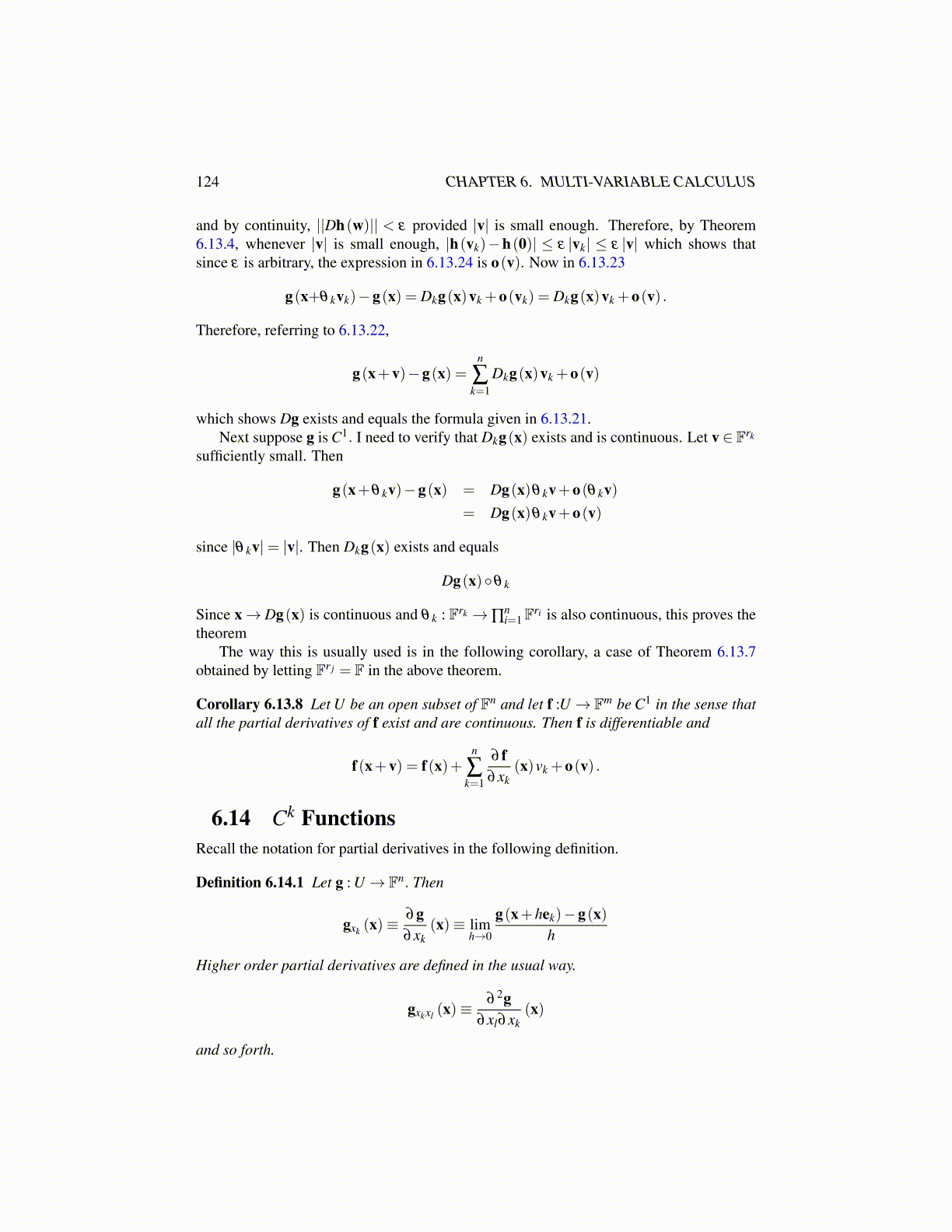
124 CHAPTER 6. MULTI-VARIABLE CALCULUS
and by continuity, ||Dh(w)|| < ε provided |v| is small enough. Therefore, by Theorem6.13.4, whenever |v| is small enough, |h(vk)−h(0)| ≤ ε |vk| ≤ ε |v| which shows thatsince ε is arbitrary, the expression in 6.13.24 is o(v). Now in 6.13.23
g(x+θ kvk)−g(x) = Dkg(x)vk +o(vk) = Dkg(x)vk +o(v) .
Therefore, referring to 6.13.22,
g(x+v)−g(x) =n
∑k=1
Dkg(x)vk +o(v)
which shows Dg exists and equals the formula given in 6.13.21.Next suppose g is C1. I need to verify that Dkg(x) exists and is continuous. Let v ∈ Frk
sufficiently small. Then
g(x+θ kv)−g(x) = Dg(x)θ kv+o(θ kv)= Dg(x)θ kv+o(v)
since |θ kv|= |v|. Then Dkg(x) exists and equals
Dg(x)◦θ k
Since x→ Dg(x) is continuous and θ k : Frk →∏ni=1Fri is also continuous, this proves the
theoremThe way this is usually used is in the following corollary, a case of Theorem 6.13.7
obtained by letting Fr j = F in the above theorem.
Corollary 6.13.8 Let U be an open subset of Fn and let f :U → Fm be C1 in the sense thatall the partial derivatives of f exist and are continuous. Then f is differentiable and
f(x+v) = f(x)+n
∑k=1
∂ f∂xk
(x)vk +o(v) .
6.14 Ck FunctionsRecall the notation for partial derivatives in the following definition.
Definition 6.14.1 Let g : U → Fn. Then
gxk (x)≡∂g∂xk
(x)≡ limh→0
g(x+hek)−g(x)h
Higher order partial derivatives are defined in the usual way.
gxkxl (x)≡∂ 2g
∂xl∂xk(x)
and so forth.